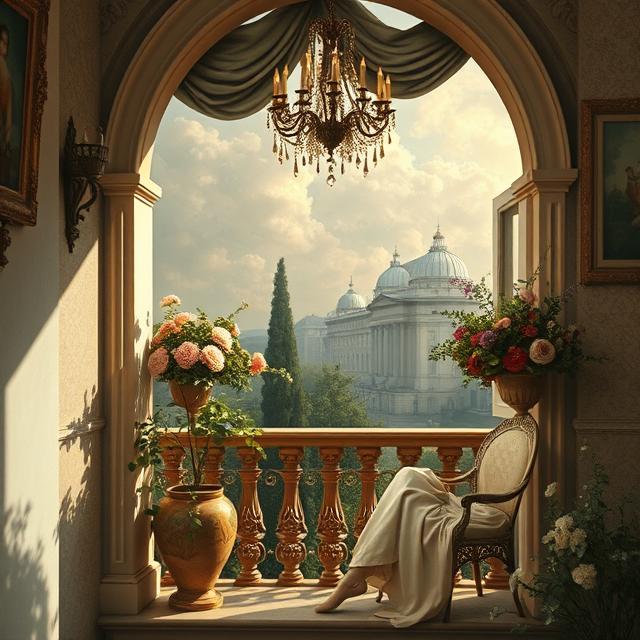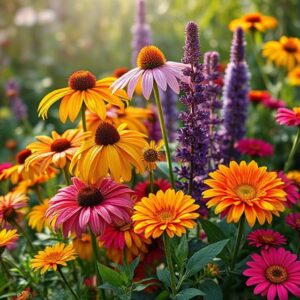Growing with Color: How to Use Color in Your Garden and Balcony
Color is more than paint — it’s petals, leaves, containers, and the quiet thrill of seeing something grow. Whether you have a balcony or a garden, adding color isn’t just about bright flowers. It’s about how plants combine to create an atmosphere that feels like you.
This guide skips the symbolism and goes straight into combinations that look beautiful, grow well together, and suit your personal vibe.
Step 1: What is Your Color Mood?
Start by choosing 2–3 main colors you love — these will set the overall vibe of your balcony or garden. Then add one or two accent colors to create depth and interest. Think of your color palette as a way to express your mood and personality through your plants. Here are some popular color moods to inspire you:
Bright & Cheerful: Think sunny yellows, vibrant oranges, and playful fuchsia shades, softened with fresh accents of white. This palette brings energy and happiness to your space — perfect if you want a lively, uplifting atmosphere.
Soft & Romantic: Gentle blush pinks, calming lavender, delicate soft whites, and soothing sage greens create a dreamy, peaceful retreat. These colors invite relaxation and quiet moments among your plants.
Bold & Modern: Deep reds, rich dark purples, sleek silver tones, and dramatic black foliage give your balcony a striking, sophisticated edge. If you love contrast and contemporary style, this palette makes a confident statement.
Fresh & Natural: A variety of greens form the foundation here, with subtle pops of cream and soft blues for added freshness. This palette feels grounded, calming, and connected to nature — ideal for those who want a serene, evergreen space.
Step 2: Consider Your Space, Budget, and Lifestyle
Before you start shopping for plants and pots, it’s important to think about your balcony or garden’s size, your budget, and how much time you want to spend caring for your plants. These practical factors will help shape your colorful oasis:
Size & Layout: Is your balcony small and cozy or a spacious garden? Vertical planters, railing boxes, or hanging pots can maximize limited space, while larger gardens offer more freedom for bold plant groupings. Measure your area and sketch a rough layout to visualize where colors will pop.
Budget: Plant choices and containers range widely in price. Decide how much you want to invest upfront and over time. Consider mixing investment pieces (like statement plants or quality pots) with budget-friendly fillers like seeds or cuttings.
Care & Maintenance: Bright colors often come from flowering plants that may need regular watering, deadheading, and pruning. If you have a busy schedule or travel often, opt for low-maintenance varieties or self-watering containers.
Once you gone over both steps, here two examples for a balcony and a garden, how to build it out with plants that grow well together and look amazing side by side.

Mid-Size Balcony (~6–10 m²)
Mood: Soft & Romantic | Exposure: Partial sun to full sun | Style Goal: Cozy corner with layers of textures and soft colors

Blush pink, lavender, creamy white, soft green

Plant | Type | Color | Pairing Benefit |
Pelargonium (scented geranium) | Filler | Soft pink or white | Long bloom, scented |
Lavender ‘Hidcote’ | Upright, structure | Purple | Contrast in shape & fragrance |
Helichrysum (Curry plant) | Trailing foliage | Silvery-green | Great texture, drought-tolerant |
Diascia | Trailing bloomer | Coral or light pink | Soft cascade over edges |
Nemesia | Compact bloomer | Pale yellow or pink | Fills gaps beautifully |
Ornamental grass (Carex ‘Evergold’) | Height + texture | Cream/green | Adds movement and contrast |
Bonus Tips:
- Use terracotta or matte white pots to unify the look
- Arrange by height: tallest at the back (lavender, pelargonium), then fillers (nemesia), then trailing (diascia, helichrysum)
- Add a small bistro set or bench cushion in soft neutral tones


Small to Medium Garden (~30–60 m²)
Mood: Bold & Playful | Exposure: Full sun | Style Goal: A riot of color with structure, balance, and repeat bloomers

Magenta, orange, yellow, purple, chartreuse

Plant | Type | Color | Pairing Benefit |
Rudbeckia ‘Goldsturm’ | Mid-height | Golden yellow | Long bloom, pollinator-friendly |
Echinacea purpurea (Coneflower) | Upright | Magenta | Structure + repeats color |
Salvia nemorosa ‘Caradonna’ | Spire | Deep violet | Contrasts warm tones, bee magnet |
Coreopsis ‘Zagreb’ | Low, mounding | Yellow | Soft base layer, long flowering |
Verbena bonariensis | Tall, airy | Lavender purple | Adds height and transparency |
Heuchera ‘Lime Marmalade’ | Foliage base | Chartreuse | Bold foliage contrast |
Gaillardia (Blanket Flower) | Mid-height | Orange-red | Heat-tolerant and vivid |
Zinnias (cutting mix) | Seasonal annual | Mixed | Easy to grow, long bloom |
Layout Tips:
- Group in odd numbers (3–5 plants per type)
- Repeat core colors across the space for cohesion
- Use mulch or decorative bark to tie the look together and retain moisture
- Add decorative stepping stones or a painted bench for extra pop

 Pro Tips for Mixing Colors & Plants
Pro Tips for Mixing Colors & Plants
- Mix heights: Create a natural flow — taller plants at the back or center, medium in the middle, and low/spillers at the edges
- Vary textures: Pair soft blooms (nemesia, rudbeckia) with strong foliage (heuchera, carex) for visual interest
- Stick to one pot color/style: Terracotta, matte white, or charcoal — pick a tone and unify containers for a clean look
- Sun matters: Group plants with the same light and watering needs. Don’t mix sun-lovers with shade-lovers
- Don’t overcrowd: Give plants breathing room. Overstuffed pots dry out faster and risk disease
- Use repetition: Repeat certain colors or plant types across the space to bring visual harmony
- Work in odd numbers: Plant in groups of 3 or 5 — it looks more natural than even-numbered rows
- Choose long bloomers: Prioritize plants with extended flowering seasons to keep the color going
- Add seasonal fillers: Fill gaps with fast-growing annuals like cosmos, zinnias, or nasturtiums
- Balance warm & cool tones: Too many warm colors (red, yellow) can feel heavy; cool tones (lavender, silver, blue) lighten the look
- Layer fragrance: Include scented plants like lavender, scented geranium, or curry plant — it adds another sensory layer
- Feed and deadhead: Regular feeding and deadheading (removing faded blooms) keeps containers and beds colorful for longer
